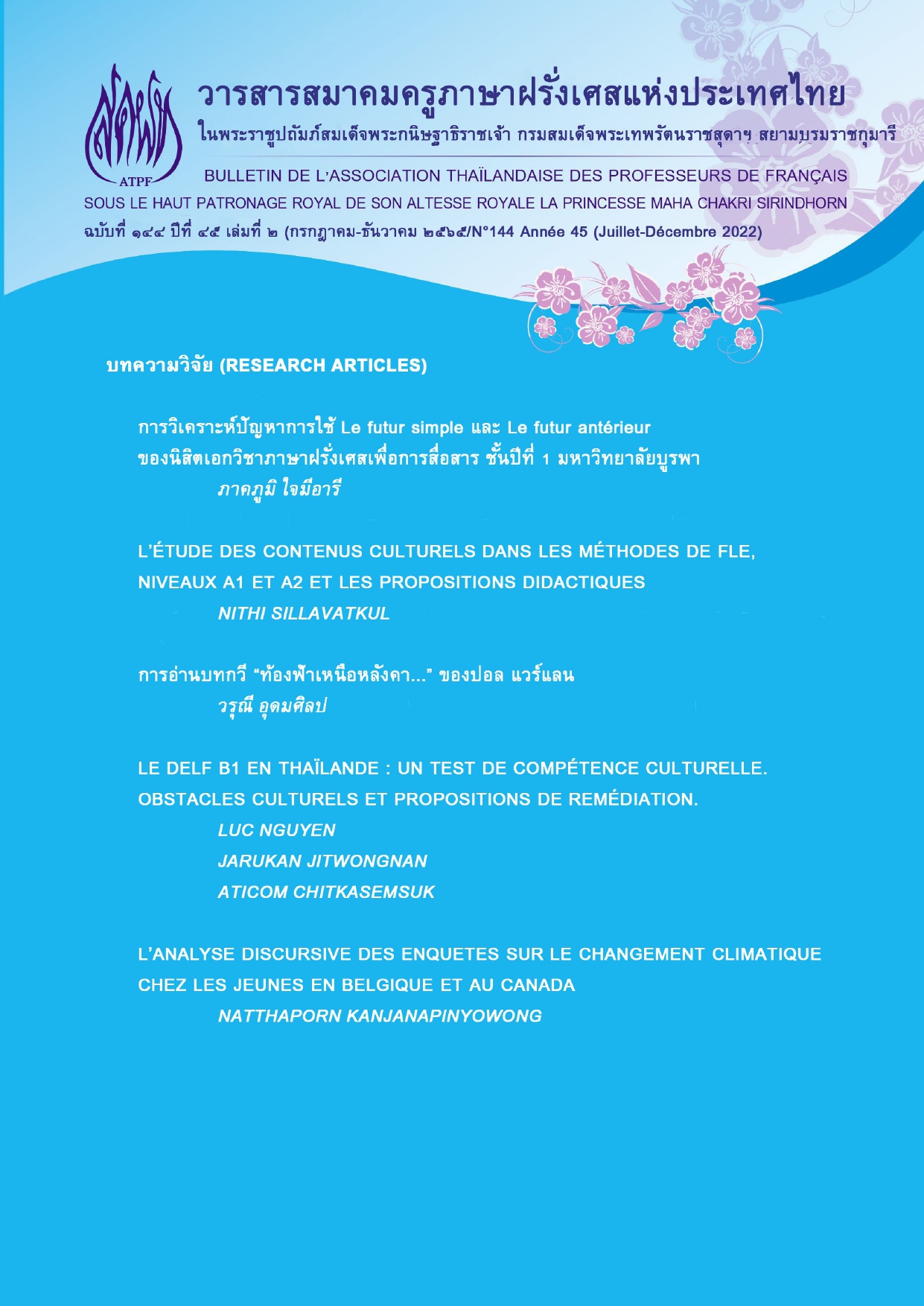An Error Analysis of Le futur simple and Le futur antérieur of 1st Year Students from French for Communication Major at Burapha University
Main Article Content
Abstract
This study aimed to analyze the problem of Le futur simple and Le futur antérieur among 54 First year students from French for communication Major at Burapha University. A thirty-item examination was delivered to each student. In the examination paper, “les verbes infinitifs” were given in brackets, and the students were required to conjugate the verbs according to the appropriate grammatical rules. The results revealed that the participants encountered problems in using Le futur simple and Le futur antérieur. The problems found included 1) conjugation that went against Les verbes irréguliers, 2) conjugation of Les verbes pronominaux, 3) conjugation of Le futur simple by using Le conditionnel présent, 4) Problem of Auxiliary verbes using in Le futur antérieur, 5) L’accord du participe passé in Le futur antérieur, and 6) confusion between Le futur simple and Le futur antérieur
The study also suggested solutions to the problem of Le futur simple and Le futur antérieur among the first-year students from French for communication major at Burapha University to improve teaching and learning. Teaching Le futur simple and Le futur antérieur in class may not be enough to enable learners to use Le futur simple and Le futur antérieur correctly and effectively to communicate. Consequently, teachers or lecturers should focus on encouraging students to use the knowledge learned in the class in real-world situation or scenarios.
The researcher realized that this study was simply an analysis of the problem of Le futur simple and Le futur antérieur among the first-year students from French for communication major at Burapha University. This may not be applied to all academic contexts; however, the researcher hoped that the findings may be a reflection of French teaching problems in Thailand in secondary and higher education, and wished that this would help to develop French teaching in Thailand.
Downloads
Article Details
References
สุดารัตน์ พุทธพงษ์. (2558). กริยาที่ปรากฎรูปร่วมกับสรรพนามในภาษาฝรั่งเศส ใน Veridian. E-Journal ฉบับภาษาไทย สาขามนุษยศาสตร์ สังคมศาสตร์ และศิลปะ มหาวิทยาลัยศิลปากร, 8(1), 679-689.
Abry, D. et Chalaron, M.L. (2003). La grammaire des premiers temps. Grenoble: PUG.
Besse, H. (1985). Méthodes et pratiques des manuels de langues. Paris: Didier.
Besse, H. et Porquier, R. (1991). Grammaire et didactique des langues. Paris: Hatier/Didier.
Boyer, H. Butzbach, M. et Pendanx, M. (1990). Nouvelle introduction à la didactique du français Langue étrangère. Paris: Clé International.
Cuq, J.P. et Gruca, I. (2002). Cours de didactique du français langue étrangère et seconde. Grenoble: PUG.
Demirtas, L. (2008). Production écrite en FLE et analyse des erreurs face à la langue turque. Istanbul: Université Marmara.
Dubois, J. et al. (2001). Dictionnaire de linguistique. Paris: Larousse.
Perdue, C. (1980). L’analyse des erreurs: un bilan pratique in Langages Apprentissage. Connaissance d’une langue étrangère, 14(57), 87-94.
Pougeoise, M. (1998). Dictionnaire de grammaire et des difficultés. Paris: Armand Colin.
Tagliante, C. (2001). La classe de langue. Paris: Clé International.
www.alloprof.qc.ca


